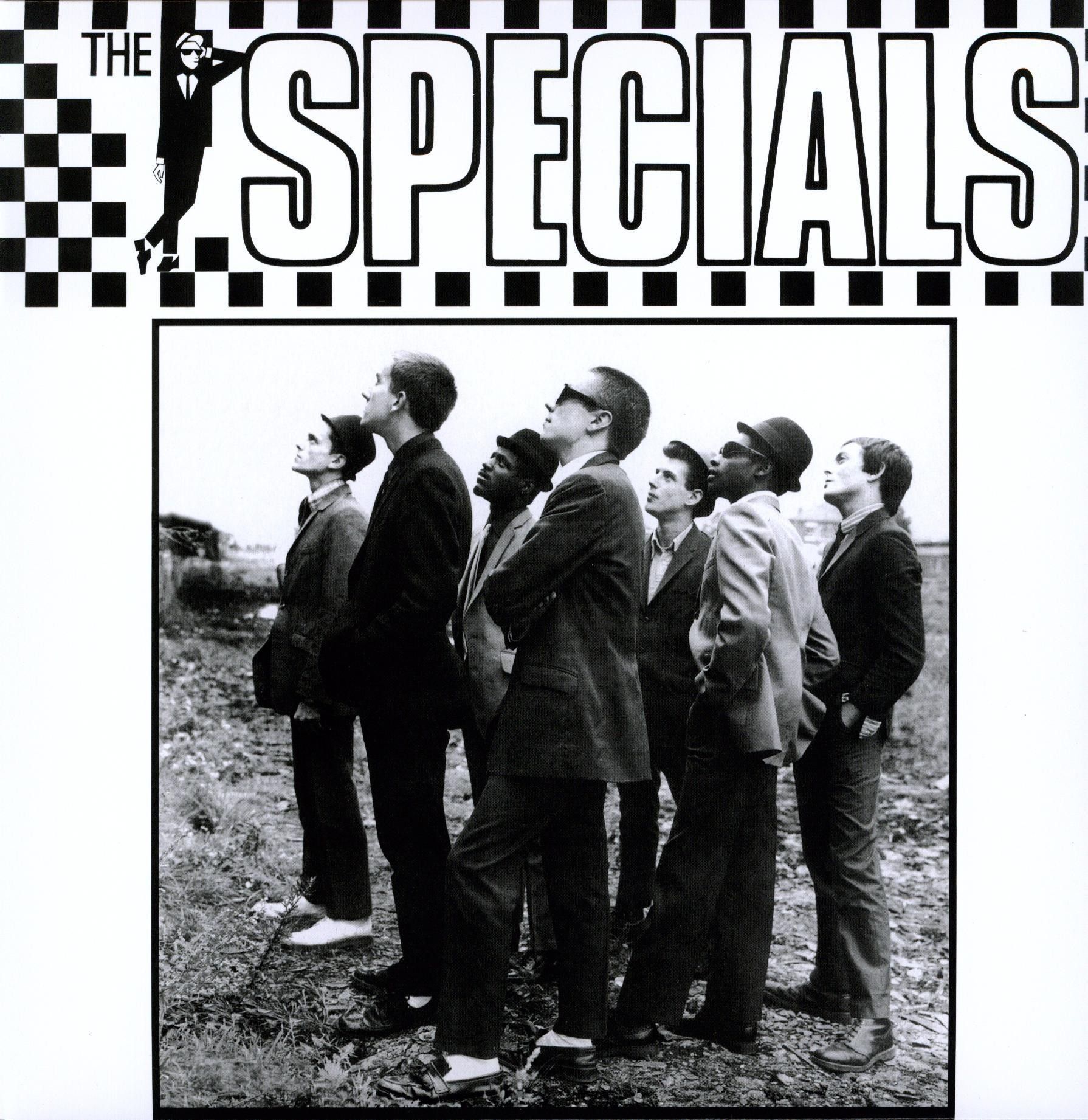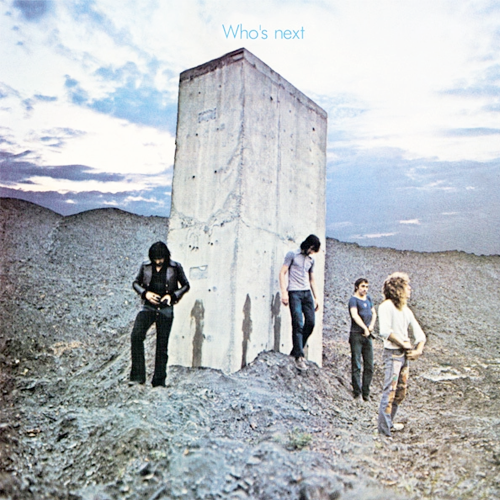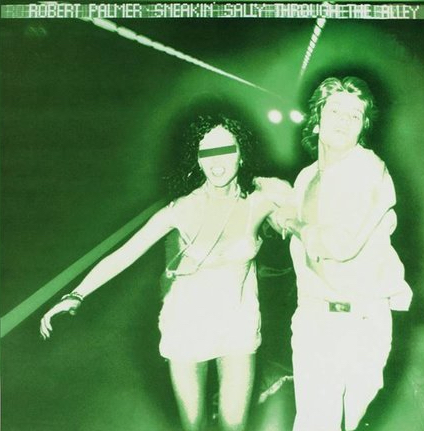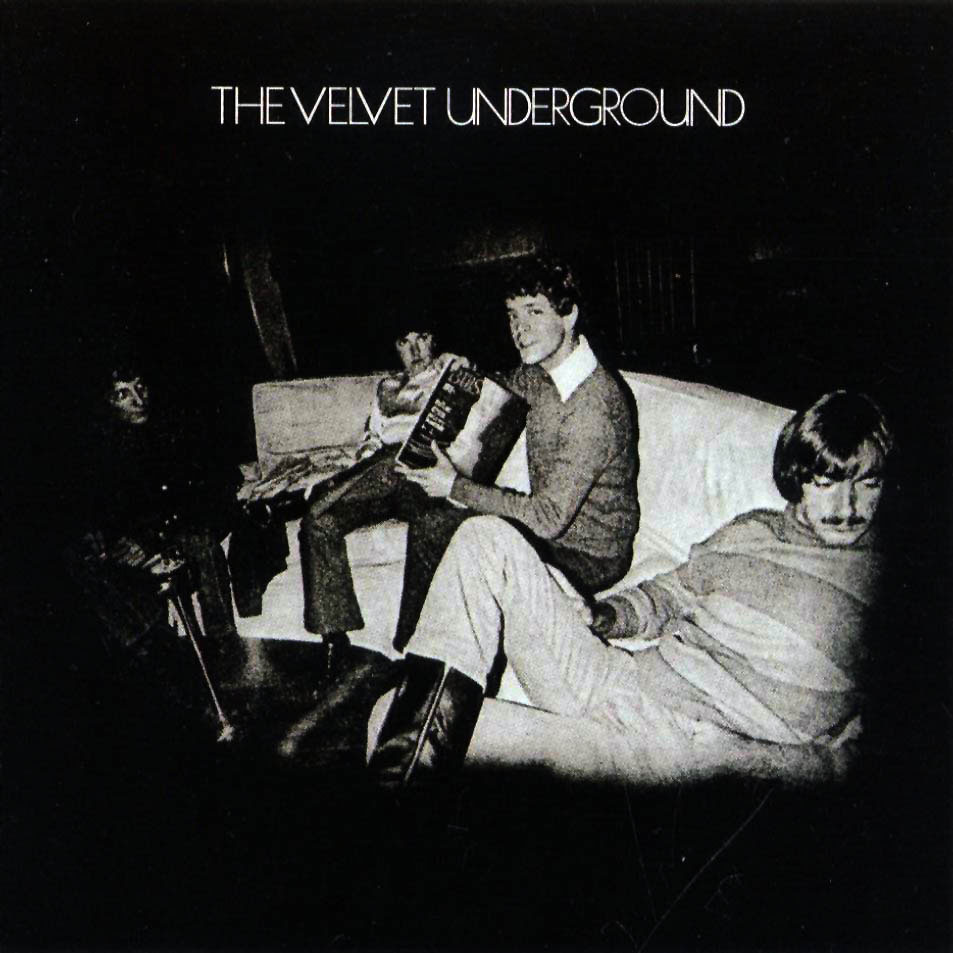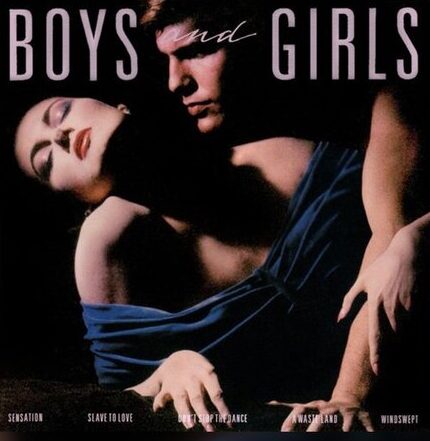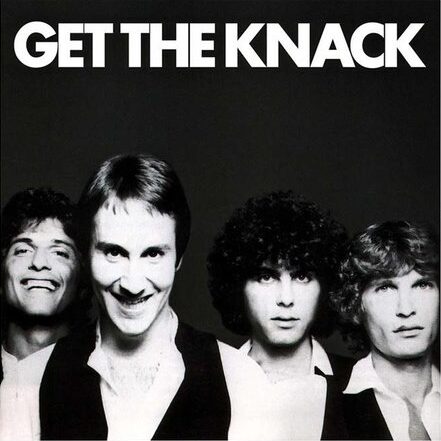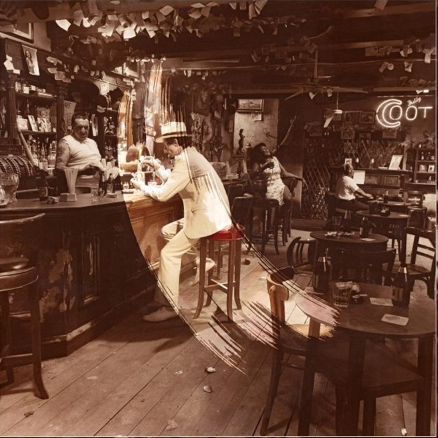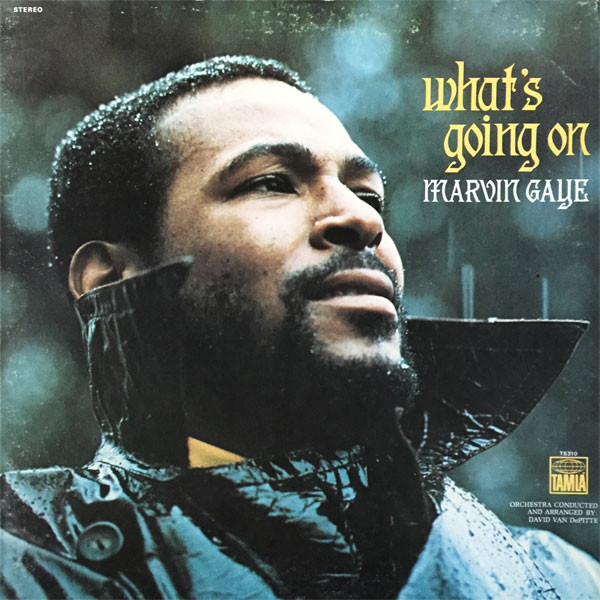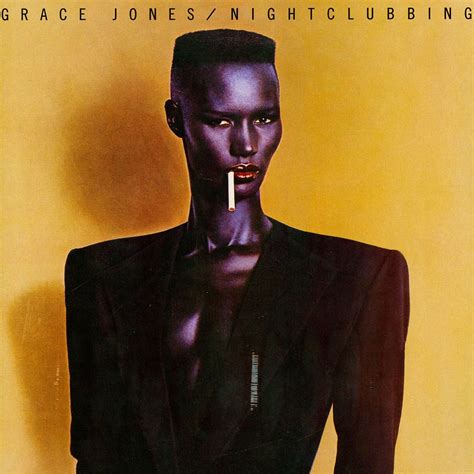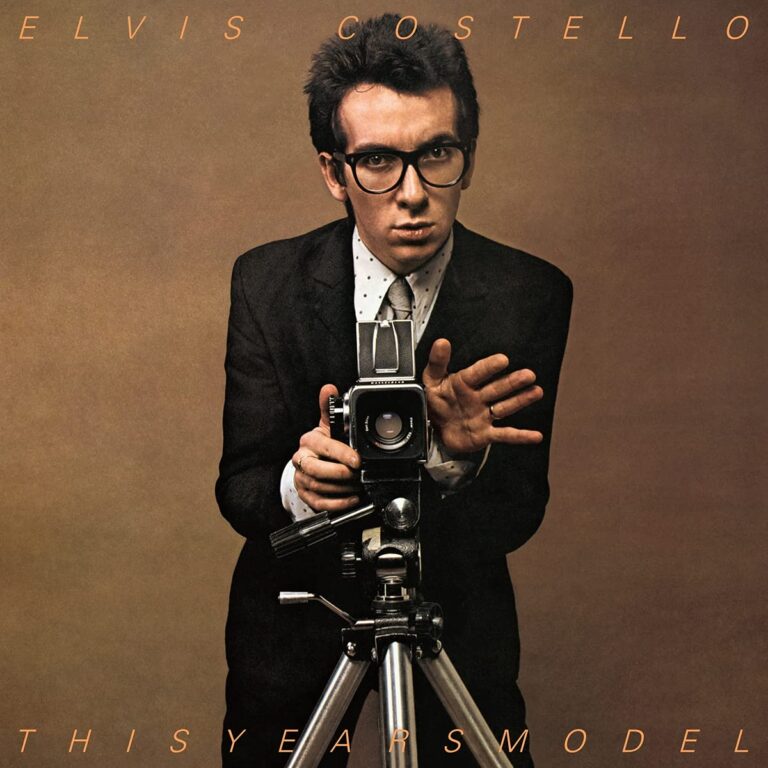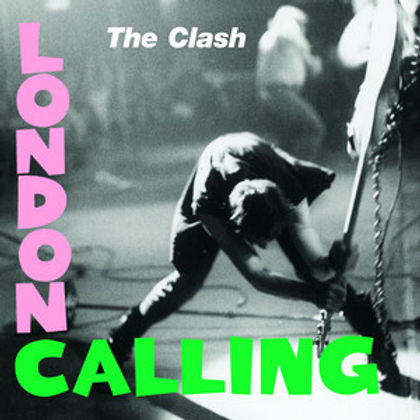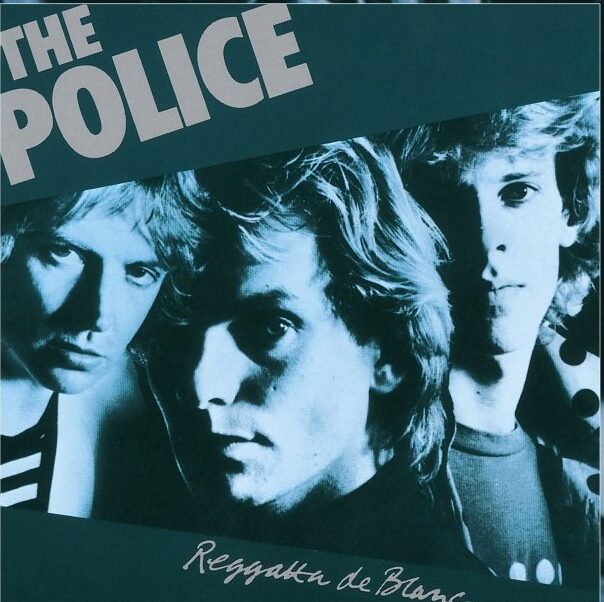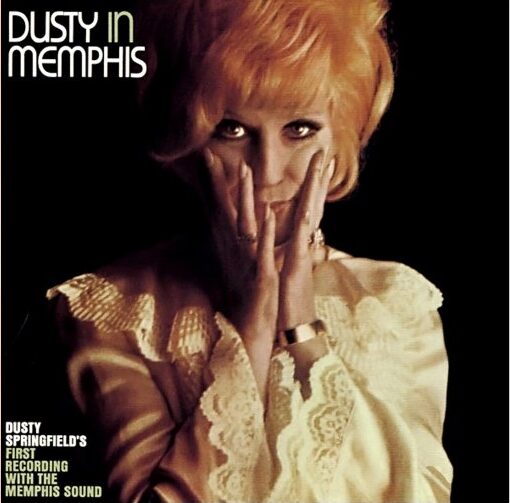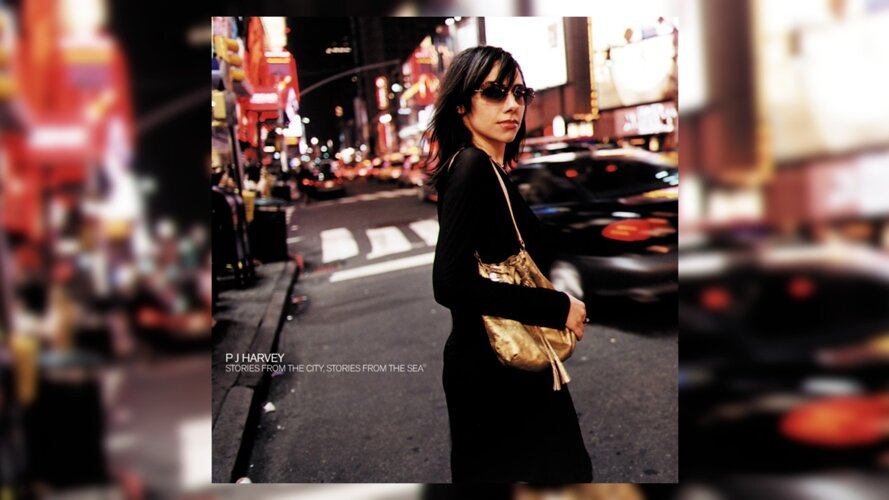Happy 46th Anniversary to Elvis Costello’s second studio album This Year’s Model, originally released March 17, 1978.
Originally posted at Albumism on March 14, 2023.
On December 17, 1977, almost five months to the day that Elvis Costello released his debut album My Aim Is True, he found himself on stage at NBC’s famous studio 8H about to play on Saturday Night Live with his new permanent backing band The Attractions.
They had already sung “Watching the Detectives” earlier in the show and were scheduled to sing “Less Than Zero,” another track from My Aim Is True. The band got maybe 10 seconds into the song before Costello screamed, “Stop! I’m sorry, ladies and gentlemen, but there’s no reason to do this song here.” Costello and the Attractions launched into a version of “Radio Radio,” a blistering critique of the music business and its embrace of commercialization.
That act of defiance earned him a ban from appearing on Saturday Night Live and a whole new slew of fans wondering what was coming next. It also made him one of the early faces of New Wave. Costello’s banishment from the variety show lasted until 1989.
The success of My Aim Is True earned Costello much deserved acclaim from critics going into his next album, This Year’s Model. For his second LP, Costello moved away from the pub rock/country rock sound of his backing band Clover and hired the aforementioned Attractions (keyboardist Steve Nieve, bassist Bruce Thomas and drummer Pete Thomas). On tour in the states during the summer of 1977, Costello began writing material for This Year’s Model, including “Radio, Radio.”
Costello’s songs on his debut LP leaned into themes of jealousy, rage, and bitterness within a relationship. For This Year’s Model, he embraces those topics but at the beginning or end of a relationship. The songwriting is solid and the addition of the Attractions gives the album more of a powerful punch that was lacking on My Aim Is True.
One of Costello’s greatest gifts is gently starting a song with a whisper, which abruptly turns into a full-blown roar. “No Action,” the album’s first track, does exactly that and you are immediately sucked in. It’s a tale of a guy who is driving himself crazy thinking about his ex-girlfriend with her new beau. The temptation to pick up the phone and call her gnaws at him. We are all too familiar with some version of this story in our own lives. “And the things in my head start hurtin’ my mind,” Costello sings. “And I think about the way things used to be / Knowing you’re with him is driving me crazy / Sometimes I phone you when I know you’re not lonely / But I always disconnect it in time.”
The one common criticism hurled at Costello’s songwriting on This Year’s Model was that the lyrics were misogynistic, with “This Year’s Girl” being a prime example. Costello wrote it as a reply to the Rolling Stones’ “Stupid Girl” from their 1966 LP Aftermath. He always bristled at the notion that “This Year’s Girl” was an attack on women. In his 2016 autobiography Unfaithful Music & Disappearing Ink, Costello offered this rebuttal, “My lyrics might have been tough on the girl, but it was full of regret and a little sympathy, while the Jagger/Richards song seemed to take delight in being heartless and cruel.” He goes further to explain, “Everything in the song is about the way men see women and what they desire from them. If there is a lie being told, then it is the one that a girl might be prepared to live or tell, in order to live up to some false ideal of attraction. That may contain disappointment and be critical, but it hardly constitutes hatred.” I agree with Costello’s take. Back in 1978, the public was not going to give a pass to a relative newcomer like Costello as opposed to Jagger and Richards.
Playing most of the songs on This Year’s Model on the summer tour of 1977 made the band a well-oiled machine by the time they were ready to record. It took eleven days between December ‘77 and January ‘78 to record Costello and the band. They played the tracks live in the studio, as was done on My Aim Is True, yielding even greater results. This was a similar pace as the Motown records that were recorded in the early ‘60s; play the songs live without too many takes and doing overdubs later.
What distinguishes This Year’s Model from My Aim Is True is the feeling that you are listening to a band that is a cohesive unit, not Costello with studio musicians. Adding keyboardist Nieve alone gave the Attractions a signature sound that separated them from their contemporaries. “Little Triggers,” a ballad about a relationship that’s about to end, highlights Nieve’s playing along with Costello’s lyrics (“Little triggers that you pull with your tongue / Little triggers, I don’t want to be hung up, strung up / When you don’t call up”). After hearing that song hundreds of times over the years, it occurred to me it was very reminiscent of Isaac Hayes & David Porter’s work of the mid ‘60s.
Songs like “Pump It Up,” “The Beat,” and “You Belong To Me” are examples of the great synergy within the band and Costello’s clever songwriting. Not many songwriters can pull off the almost impossible feat of displaying wit, pathos and utter disgust like Costello. This Year’s Model made it difficult for casual observers to lazily compare the band to other New Wave acts of that era. Uncutmagazine’s Chris Roberts once referred to Costello as the “bitter bard of the punk era.” While that was a fair assessment, This Year’s Model established Elvis Costello & the Attractions as a standalone entity who more than delivered on the promise displayed on the album. You knew they weren’t going away anytime soon.

